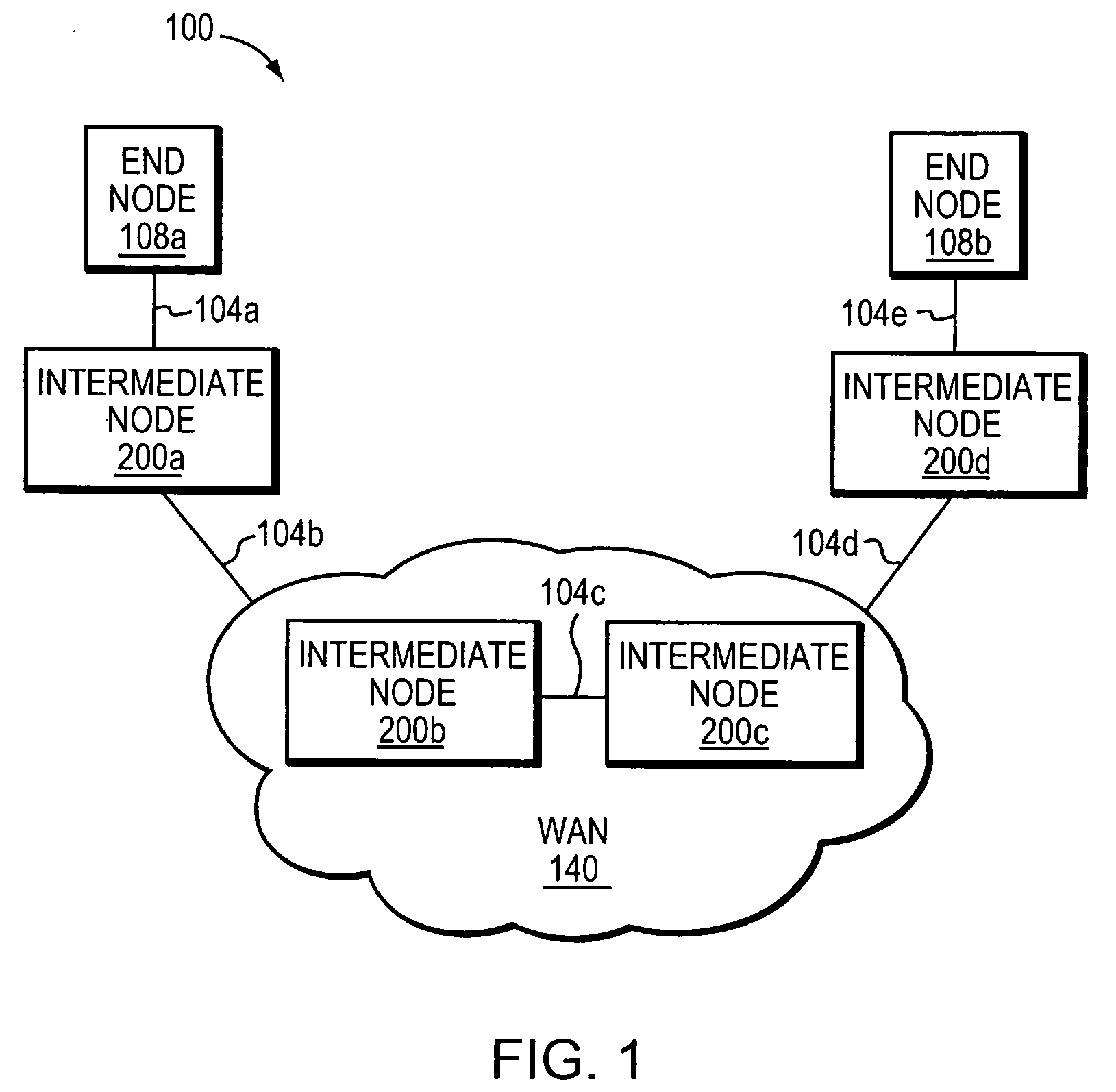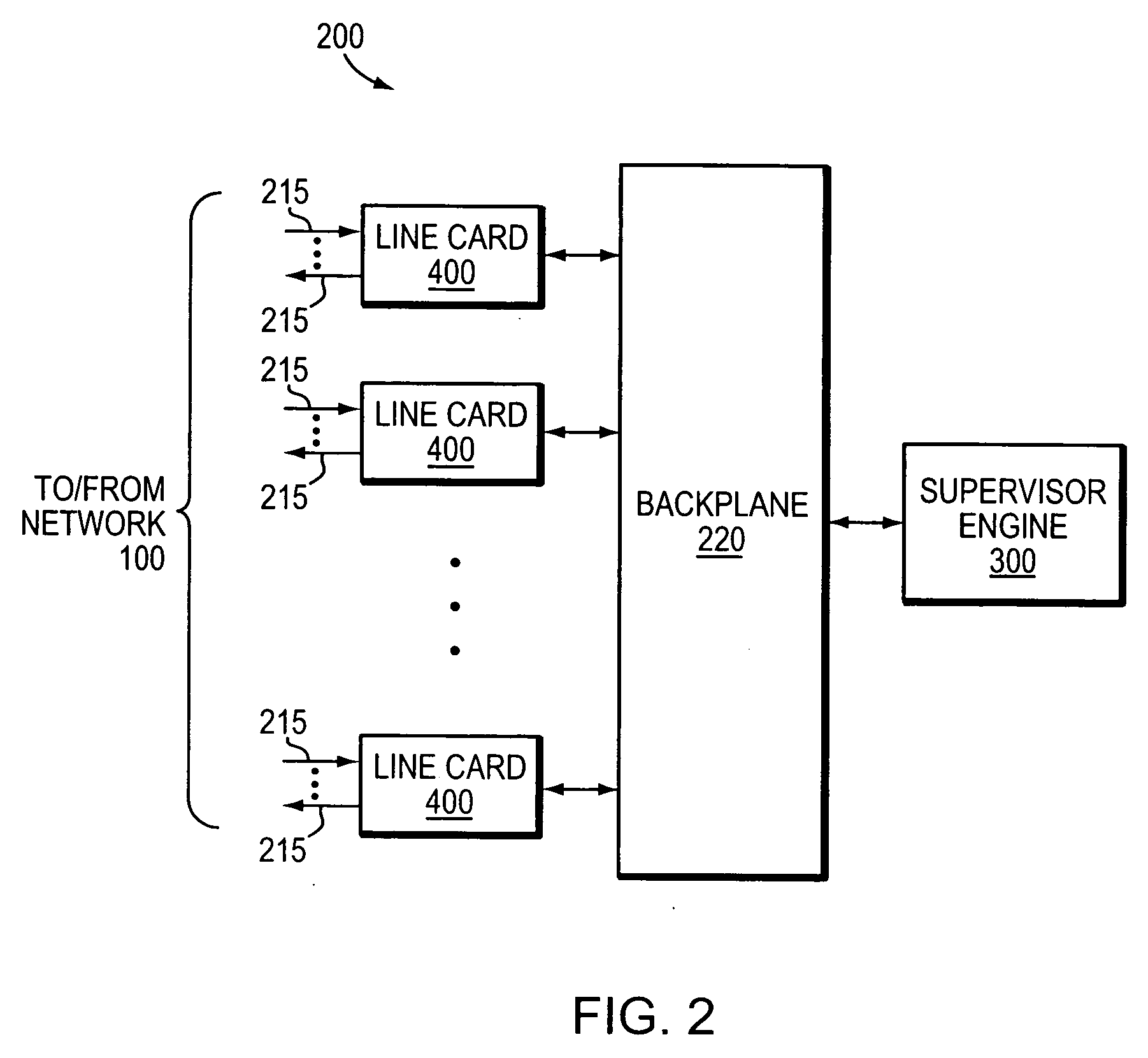System and method for reporting out-of-resources (OOR) conditions in a data network
a data network and data technology, applied in the field of data networks, can solve the problems of insufficient resources, lack of hardware resources, and inability to provide all the components necessary for te support, and achieve the effect of avoiding unnecessary disruption of data flow
- Summary
- Abstract
- Description
- Claims
- Application Information
AI Technical Summary
Benefits of technology
Problems solved by technology
Method used
Image
Examples
Embodiment Construction
[0042]FIG. 1 is a schematic block diagram of a data network 100 that may be advantageously used with the present invention. The data network 100 comprises a collection of communication (data) links 104 connected to a plurality of network nodes, such as end nodes 108a-b and intermediate nodes 200a-d, to form an internetwork of network nodes. Intermediate nodes 200b-c are part of a wide-area network (WAN) 140, such as the Internet. The internetworked nodes communicate by exchanging data packets according to a predefined set of protocols, such as the Transmission Control Protocol / Internet Protocol (TCP / IP) or the Multiprotocol Label Switching (MPLS) protocol. A protocol, as used herein, is a set of formal rules describing how to transfer data between e.g., two nodes in a data network.
[0043]FIG. 2 is a high-level partial schematic block diagram of intermediate node 200, which is illustratively a router. Suitable intermediate nodes that may be used with the present invention include the...
PUM
 Login to View More
Login to View More Abstract
Description
Claims
Application Information
 Login to View More
Login to View More - R&D
- Intellectual Property
- Life Sciences
- Materials
- Tech Scout
- Unparalleled Data Quality
- Higher Quality Content
- 60% Fewer Hallucinations
Browse by: Latest US Patents, China's latest patents, Technical Efficacy Thesaurus, Application Domain, Technology Topic, Popular Technical Reports.
© 2025 PatSnap. All rights reserved.Legal|Privacy policy|Modern Slavery Act Transparency Statement|Sitemap|About US| Contact US: help@patsnap.com



